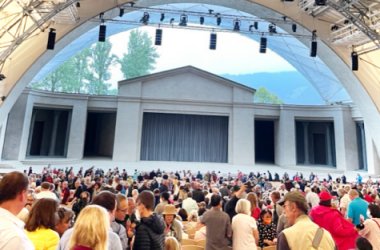Last August I joined a pilgrimage with Totally Yours Pilgrimages to Germany and Ireland, highlighted by an attendance to the Oberammergau Passion Play, something popular among Filipino Americans (FilAms). This was evidence by the fact that 70% of this pilgrimage group were FilAms.
This Passion Play is performed every ten years as a result of a vow by the Oberammergau townspeople, much like the “Pabasa”, a Catholic devotion in the Philippines performed during Holy Week, which is often made in fulfillment of a “panata” or vow. Oberammergau lies in the Ammergau valley among the Bavarian Alps. What makes this village renowned all over the world is its Passion Play. It started with the Thirty Years War (1618-1648) which ravaged Europe and brought about the bubonic plaque. Over a million died of the plague in Saxony and Bavaria alone. Oberammergau remained plague free because it enforced a strict quarantine. In 1633 a villager, who was living and working In Eschenlohe, a few kilometers away, sneaked in and brought the plague with him. Within months 84 villagers in Oberammergau, died of the plaque. The villagers prayed to God and made a vow to perform every tenth year a play of the Lord’s suffering and death if God would spare them from the plague. After that, nobody in Oberammergau died from the plague. In 1634, the play was staged for the first time. The first stage for the play was set up in the cemetery, until 1830 when the stage was transferred to a meadow north of the village. This was to become the site of the present-day theater. The passion play’s dialogue was in German; however, the audience was given a book with the English translation. If you read the translation while the play was going on, you would miss what’s happening on the stage. Even though the dialogue was in German, it was easy to follow because the scenes were familiar. The production was magnificent, with live animals and all. The play started at 1:30 p.m. and lasted until about 10:30 p.m. The play had a threehour dinner break from 4:30 p.m. to 7:30 p.m. This break allowed the audiences, which come from all over the world, the chance to patronize the village’s restaurants and shops, which they did.
The play consisted of twelve acts, starting with Jesus’ entry into Jerusalem and ending with his resurrection. The outline of the play had remained the same since 1634, even though periodically changes had to be made. Music had been an integral part of the play. The orchestra and chorus, playing during the transition between acts, was just amazing. To take part in the play, the person must have been born in Oberammergau or have lived there for 20 years. In 1922, the Catholic Church gave the play a Missio Canonica, a certification that the beliefs of the Church were being presented.
The play runs from May to October. Only twice the Play did not take place – in 1770 when passion plays were banned, and in 1940 due to World War II. The play’s continuity reflects the determination of the people to honor its vow. For us, this Passion Play was worthy to be the highlight of our pilgrimage. (By KM Edward Brotonel)

The stage of the Passion Play Theater. The theater sits 4,500 people.

Photo shows some of the Filipino Americans watching the Passion Play enjoy their dinner break.
 VIA Times – October 2022 Issue Vital News, Vibrant VIews for Asian Americans in Chicago & Midwest
VIA Times – October 2022 Issue Vital News, Vibrant VIews for Asian Americans in Chicago & Midwest

